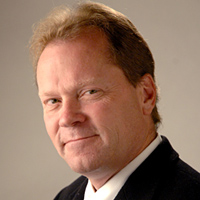For decades, Milwaukee has lacked a common vision among its leaders. The powers that be seemed to toil in their own respective silos, and the community flailed away, grappling with the issues of poverty, crime, education, transit, infrastructure and economic development.
As a community, we all seemed to want progress, but without change.
Out of necessity, that community disconnect may be changing.
The Milwaukee Press Club and the Marquette University Law School on Wednesday presented "What Now, Milwaukee? A Forum on the Future of Wisconsin's Largest City." The panelists were Milwaukee Mayor Tom Barrett, Milwaukee County Executive Chris Abele, Milwaukee Public Schools Superintendent Gregory Thornton, Greater Milwaukee Committee president Julia Taylor and Metropolitan Milwaukee Association of Commerce president Tim Sheehy.
The leaders of Milwaukee's public, educational and private sectors engaged in a candid, unscripted conversation about the way forward.
Some clear themes of unprecedented urgency emerged from the forum.
The first is that now, more than ever – given the state's budget deficit and the cuts in state aid – Milwaukee is on its own. For better or worse, Milwaukee as a community is going to have to collaborate and be innovative in ways it never has before.
It has no choice.
Historically, Milwaukee has been a city of projects, but no vision, Taylor said.
Despite the daunting challenges, Thornton said this moment in history provides "a wonderful opportunity to reinvent" Milwaukee.
Thornton boldly proposed splitting MPS into four separate geographic school districts, each with independent superintendents, Montessori schools, art schools and educational missions. One district would be a downtown district that would include all of the amenities of downtown. Local businesses would "adopt" their neighborhood districts, Thornton said.
"This (the future of MPS) is not Dr. Thornton's issue. This is our issue," Taylor said.
The historical disconnect between the county executive's office and City Hall is the main reason the county-owned land in the Park East Corridor sits undeveloped.
Able and Barrett are working together to share resources, cut spending and jointly promote commerce, and the Park East could become a jewel of that collaboration.
Meanwhile, Milwaukee Police Chief Ed Flynn is achieving unprecedented gains in public safety, Barrett said.
"I want a city where grandmas can sit on their front porch ... and watch their grandchildren play," Barrett said.
Sheehy said the public and private sectors must work together to help manufacturing companies form and grow, because the net exports from those firms generate real wealth for the region.
None of the panelists are Polyannas. They acknowledged the steep challenges that will be imposed by the state budget cuts. The pain will be felt with larger classroom sizes and fewer mass transit options, which will take a toll on the workforce and employers, alike.
The way forward for Milwaukee, which still faces steep unemployment in the inner city, will not be easy. But for the first time in a long time, the public and private sectors in Milwaukee seem to be at the table, collaborating for the common good.
That's a start.
Steve Jagler is executive editor of BizTimes in Milwaukee and is past president of the Milwaukee Press Club. BizTimes provides news and operational insight for the owners and managers of privately held companies throughout southeastern Wisconsin.
Steve has won several journalism awards as a reporter, a columnist and an editor. He is a graduate of the University of Wisconsin-Milwaukee.
When he is not pursuing the news, Steve enjoys spending time with his wife, Kristi, and their two sons, Justin and James. Steve can be reached at steve.jagler@biztimes.com.







